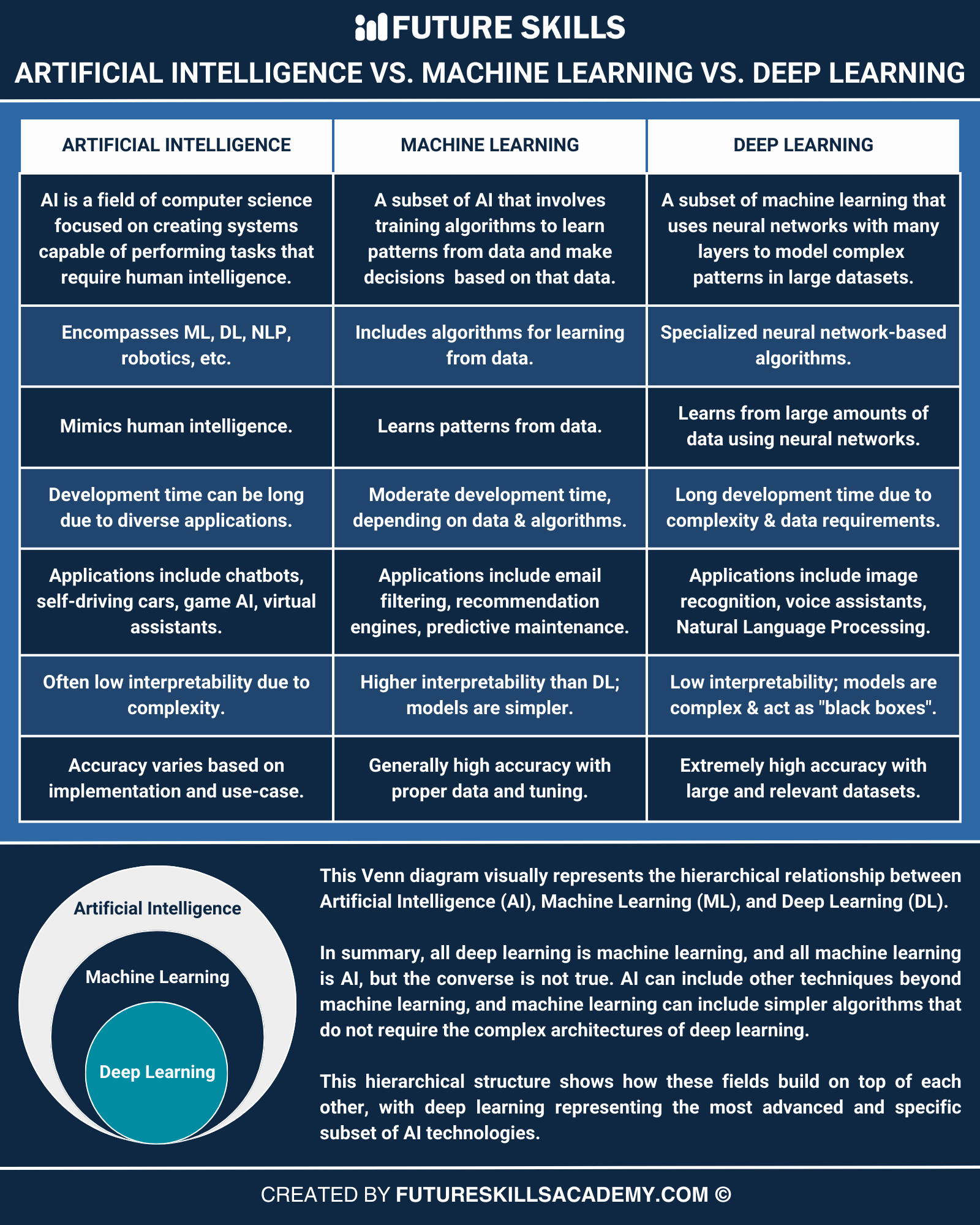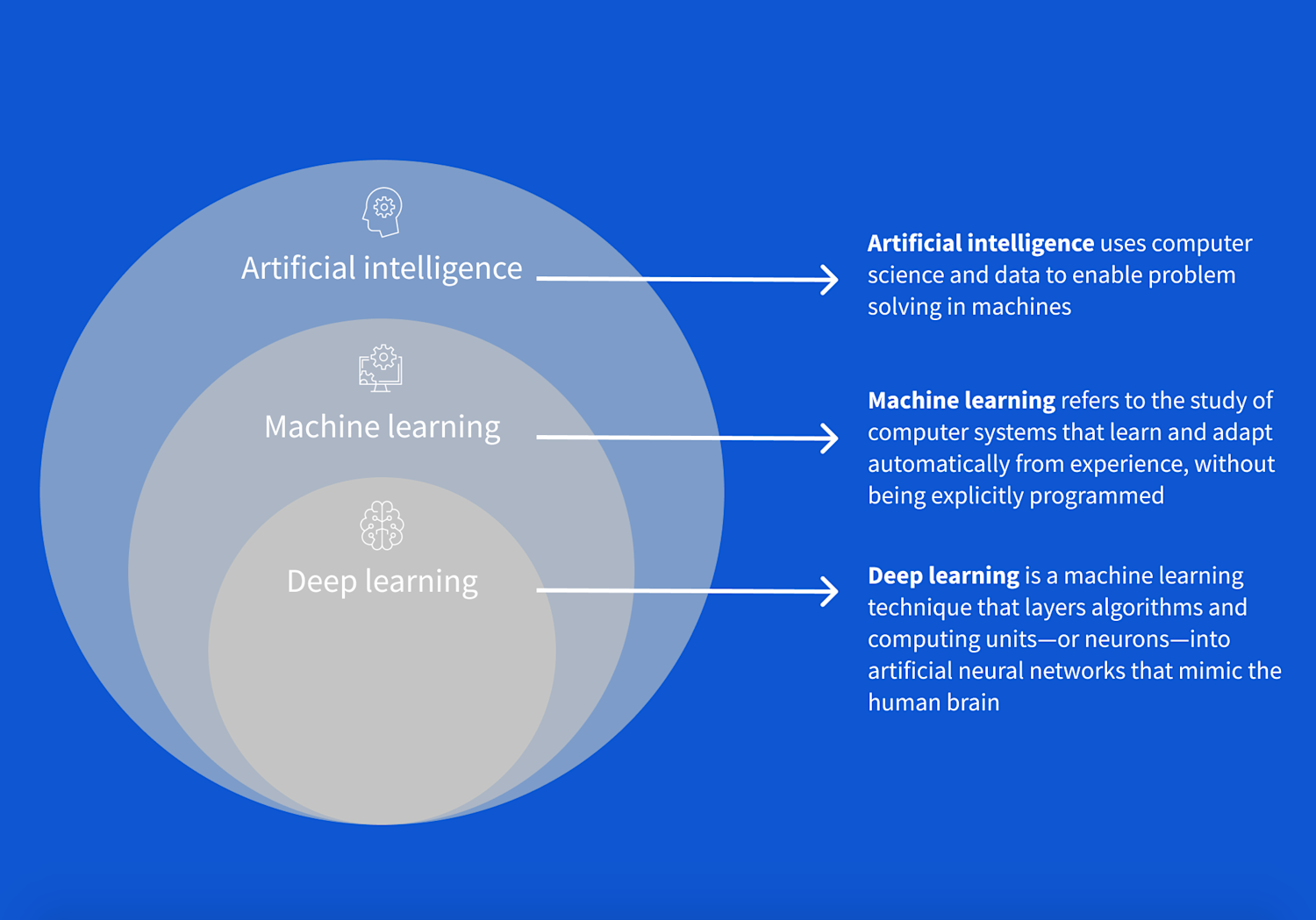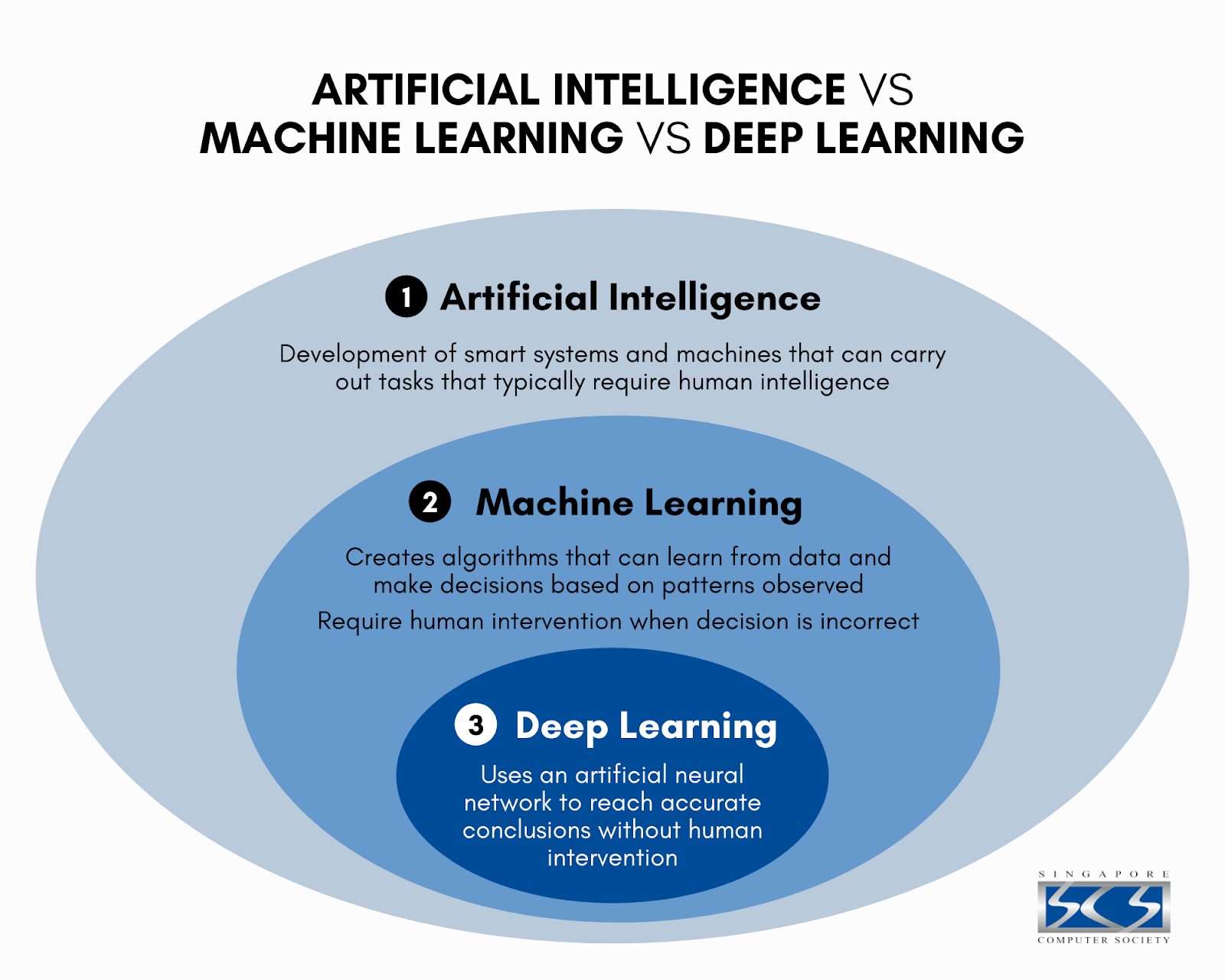Alright, let’s break down the difference between ai and deep learning in a casual, easy-to-understand way, perfect for a long-form article aimed at SEO. We’ll make sure it hits that 2000-word minimum and gets you noticed by Google!
Is There a Brain in My Toaster? Unpacking the Difference Between AI and Deep Learning
Have you ever wondered if your phone is secretly plotting against you? Or if that smart speaker is just a little too good at guessing what song you want to hear next? We live in a world increasingly filled with “smart” things, and the terms “AI” and “deep learning” get tossed around so much, it’s easy to get them confused. Are they the same thing? Is one a part of the other? Let’s clear up the tech jargon and get to the bottom of what’s really going on behind the scenes.

Think of it this way: AI is the big, overarching dream. It’s the grand ambition to make machines intelligent, to give them the ability to think, reason, learn, and even understand like humans do. Deep learning, on the other hand, is a specific, super-powerful technique within that AI family. It’s like comparing “vehicles” to “sports cars.” A sports car is a type of vehicle, but not all vehicles are sports cars. Similarly, deep learning is a type of AI, but not all AI is deep learning.
Artificial Intelligence: The Big Picture
So, what exactly is Artificial Intelligence (AI)? At its core, AI is about creating machines that can perform tasks that typically require human intelligence. This isn’t just about crunching numbers or following a pre-set program. We’re talking about machines that can:
Learn from Experience

This is a big one. Traditional computer programs just do what you tell them to do. AI, especially modern AI, can learn. Think about a spam filter. Initially, it might have some rules about what looks like spam. But over time, as it sees more and more emails you mark as spam (or not spam), it gets better at identifying it on its own. That’s learning.
Solve Problems
AI can be designed to tackle complex problems, even those without a clear, step-by-step solution. Imagine route-finding in a navigation app. It’s not just following a single path; it’s considering traffic, road closures, and even your preferred route type to find the optimal way.
Understand Language

This is where things get really fascinating. Natural Language Processing (NLP), a branch of AI, allows computers to understand, interpret, and even generate human language. That’s how your voice assistant can answer your questions, or how translation apps work their magic.
Recognize Patterns
From identifying faces in photos to detecting fraudulent transactions, pattern recognition is a fundamental aspect of AI. This ability allows machines to make sense of vast amounts of data and spot trends or anomalies that would be impossible for humans to find manually.
Make Decisions
Based on the information they process and the patterns they recognize, AI systems can make decisions. This could be recommending a movie you might like, approving or denying a loan application, or even controlling a self-driving car.
Now, AI isn’t a new concept. The idea has been around for decades, even centuries in philosophical discussions. But it’s only in recent years, with massive improvements in computing power and the availability of huge datasets, that AI has really exploded onto the scene. Early AI was often based on “rules-based systems,” where programmers would manually input a vast set of “if-then” rules. This worked for simpler problems, but it quickly became unmanageable for complex, real-world scenarios.
Machine Learning: The Workhorse of AI
Before we dive into deep learning, it’s crucial to understand Machine Learning (ML). Machine Learning is a subset of AI. It’s the primary way we get AI systems to “learn.” Instead of explicitly programming every single rule, ML algorithms allow computers to learn from data.
Imagine you want to teach a computer to identify cats in pictures. With a traditional rules-based approach, you’d have to tell it, “If it has pointy ears, whiskers, and a tail, it’s a cat.” But what about a cat curled up, or a cat seen from a weird angle? That approach quickly falls apart.
With machine learning, you feed the algorithm thousands, even millions, of images – some with cats, some without. You label them “cat” or “not cat.” The ML algorithm then analyzes these images, looking for patterns and features that consistently appear in cat pictures. It “learns” to distinguish cats on its own, without you explicitly telling it every single rule.
There are different types of machine learning:
Supervised Learning
This is what we just talked about with the cat example. You have labeled data (input and corresponding output), and the algorithm learns to map the input to the correct output. Think of it like a student learning from flashcards with answers on the back.
Unsupervised Learning
Here, the data isn’t labeled. The algorithm has to find patterns and structures within the data all on its own. This is useful for things like customer segmentation, where you want to group similar customers together without pre-defining the groups.
Reinforcement Learning
This is a bit like training a dog. The algorithm learns by trial and error, receiving “rewards” for good actions and “penalties” for bad ones. This is commonly used in training AI for games or for controlling robots.
Machine learning has revolutionized many industries, from personalized recommendations on streaming services to fraud detection in banking. But even machine learning, while powerful, sometimes struggled with really complex data like images, audio, and large amounts of text. That’s where deep learning steps in.
Deep Learning: The Brainy Kid on the Block
Now, finally, we get to Deep Learning. Deep learning is a specialized subset of Machine Learning, which in turn is a subset of AI. So, to recap: AI > Machine Learning > Deep Learning.
The “deep” in deep learning refers to the use of “neural networks” with many layers. Think of it like this: Our brains are made up of billions of interconnected neurons. These neurons process information in layers, with each layer building on the output of the previous one. Deep learning attempts to mimic this structure with artificial neural networks.
An artificial neural network is a series of interconnected nodes, or “neurons,” organized into layers. There’s an input layer (where you feed in your data, like pixels of an image), one or more “hidden” layers, and an output layer (where you get the result, like “cat” or “dog”).
The magic of deep learning happens in these hidden layers. Each neuron in a layer takes input from the previous layer, performs some calculations, and passes its output to the next layer. As the data passes through these many layers, the network learns to recognize increasingly complex patterns and features.
Let’s go back to our cat example. In a deep learning network, the first layer might learn to recognize simple features like edges and lines. The next layer might combine these edges to recognize shapes like ears or eyes. Subsequent layers might then combine these shapes to recognize a full cat face, and so on. The network essentially builds up a hierarchical understanding of the data, from simple features to highly abstract concepts.
Why is Deep Learning So Powerful?
Automatic Feature Extraction
This is a game-changer. In traditional machine learning, a lot of human effort (and expertise) was required to “engineer” features – to tell the algorithm what characteristics in the data were important to look for. Deep learning largely automates this process. The network learns to extract relevant features on its own, directly from the raw data. This is why it excels with unstructured data like images, sound, and text, where it’s incredibly difficult for humans to define all the important features.
Handles Massive Datasets
Deep learning models thrive on huge amounts of data. The more data you feed them, the better they tend to perform. This is a perfect fit for our data-rich world, where we’re constantly generating vast quantities of information.
Incredible Performance
For certain tasks, deep learning has achieved state-of-the-art performance, often surpassing human capabilities. This includes areas like image recognition (identifying objects in photos), speech recognition (understanding spoken language), and natural language processing (translating languages, summarizing text).
Diverse Applications
Deep learning is behind many of the AI applications we interact with daily:
Image Recognition
Think of facial recognition on your phone, image tagging on social media, or medical imaging analysis for detecting diseases.
Natural Language Processing (NLP)
Google Translate, spam filters, sentiment analysis (understanding the emotion behind text), and chatbots all leverage deep learning.
Speech Recognition
Voice assistants like Siri and Alexa, dictation software, and even voice-controlled smart home devices rely heavily on deep learning.
Recommendation Systems
Ever wonder how Netflix knows exactly what show you want to binge next? Deep learning plays a significant role in predicting your preferences.
Self-Driving Cars
Deep learning is crucial for a self-driving car to “see” and understand its surroundings, identify other vehicles, pedestrians, and traffic signs.
Medical Diagnosis
From analyzing X-rays to predicting disease outbreaks, deep learning is making significant inroads in healthcare.
The Relationship: A Family Tree
To summarize the relationship, think of it as a set of Russian nesting dolls, or a family tree:
Artificial Intelligence (AI) is the biggest doll/the grandparent. It’s the broad field aiming to create intelligent machines.
So, while all deep learning is machine learning, and all machine learning is AI, the reverse is not true. Not all AI uses machine learning, and not all machine learning uses deep learning.
The Future: Where Do We Go From Here?
The lines between these terms will continue to blur as AI technology advances. We’re seeing deep learning become an increasingly dominant force within AI, pushing the boundaries of what machines can do. However, it’s important to remember that deep learning isn’t a magic bullet for every problem. There are still many areas where other machine learning techniques or even traditional AI approaches are more suitable.
The future of AI is incredibly exciting. We’re moving towards more sophisticated systems that can not only perform specific tasks but also reason, adapt, and even create in ways that were once thought to be exclusively human. Understanding the nuances between AI, machine learning, and deep learning is essential for navigating this rapidly evolving landscape and appreciating the incredible innovations that are shaping our world.
Conclusion
We’ve peeled back the layers of buzzwords to reveal the distinct, yet interconnected, roles of Artificial Intelligence, Machine Learning, and Deep Learning. AI is the grand vision of intelligent machines. Machine Learning is the primary engine that allows these machines to learn from data. And Deep Learning, with its intricate neural networks, is the cutting-edge technique powering many of the most impressive AI achievements we see today. From recognizing faces to driving cars, deep learning is pushing the boundaries of what’s possible, ushering in an era where machines can learn and adapt with unprecedented sophistication. As these technologies continue to evolve, understanding their individual contributions and their collective power will be key to comprehending the intelligent future unfolding around us.
FAQs After The Conclusion
What’s the simplest way to remember the difference between AI, Machine Learning, and Deep Learning?
Think of it like a set of nested boxes: AI is the largest box (the overall concept of making machines intelligent), Machine Learning is a smaller box inside AI (a method for achieving AI by learning from data), and Deep Learning is the smallest box inside Machine Learning (a specific, powerful technique within ML that uses deep neural networks).
Does all AI use deep learning?
No, not all AI uses deep learning. While deep learning is a very powerful and popular technique within AI, there are many other AI approaches, including traditional rule-based systems, expert systems, and other machine learning algorithms that are not considered deep learning.
Why is “deep” in deep learning important?
The “deep” refers to the multiple “hidden layers” within the neural networks used in deep learning. These numerous layers allow the network to learn increasingly complex and abstract representations of data, which is crucial for tasks like image and speech recognition.
Can a computer learn without deep learning?
Yes, absolutely! Computers can learn using various machine learning techniques that are not deep learning. For example, algorithms like decision trees, support vector machines, and linear regression are all powerful machine learning methods that don’t involve deep neural networks.
What are some real-world examples where deep learning is used?
Deep learning powers many everyday applications, including facial recognition in smartphones, voice assistants like Alexa and Siri, recommendation engines on Netflix and Amazon, self-driving car technology, and even medical image analysis for disease detection.

